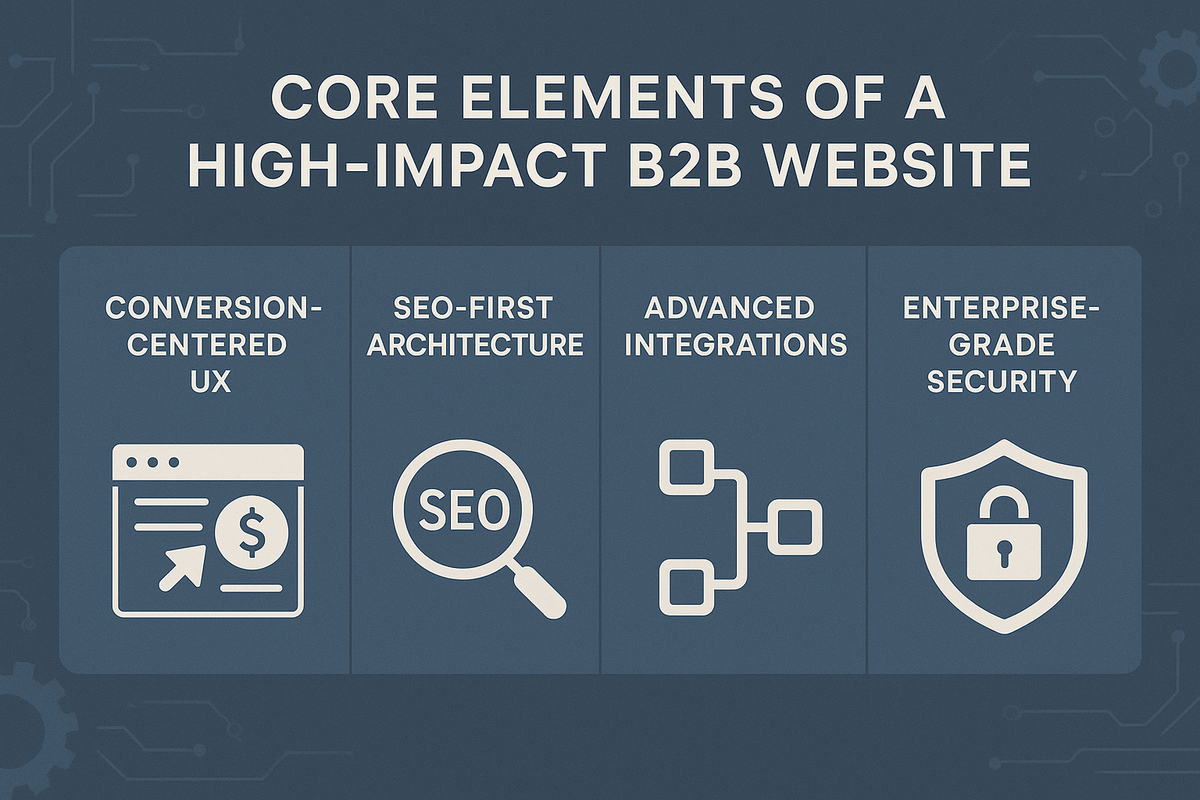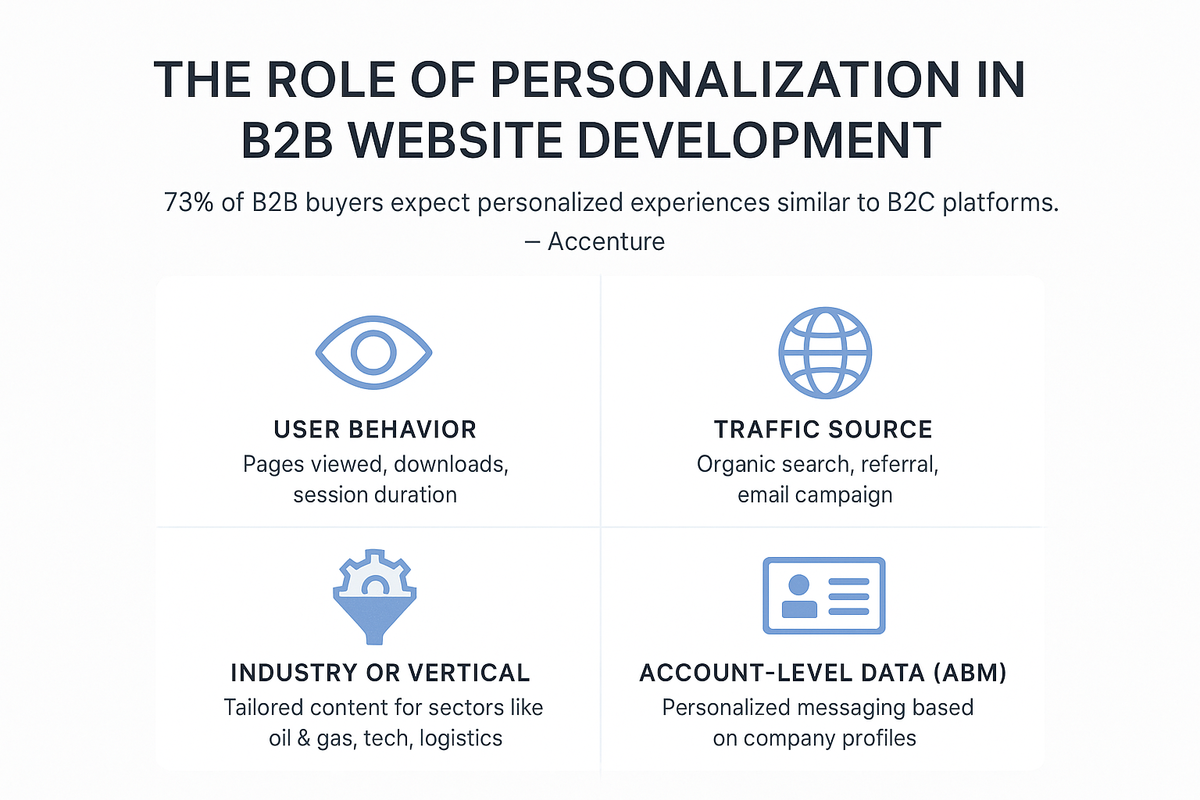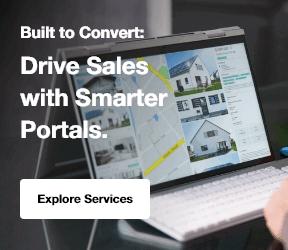In today’s digital-first business landscape, 83% of B2B buyers prefer to research solutions online rather than engage with sales reps in the early stages (Gartner). For companies operating in complex, competitive sectors like enterprise technology, manufacturing, and oil & gas, this shift means one thing: your website is now your frontline sales asset.
Yet, despite the high stakes, many business-to-business websites are still built without a strategy, offering vague messaging, clunky interfaces, and a lack of a clear buyer journey.
So, exactly What is B2B Website Development is ?
Unlike basic web design, B2B web development involves the strategic creation of websites that serve multi-stakeholder audiences, integrate with backend systems (such as CRM and ERP), and support long, nuanced sales cycles. These platforms must not only showcase capabilities but also educate prospects, enable conversions, and scale with the business through digital marketing and automation-driven strategies.
This article breaks down what makes a B2B website successful, from core features and development workflows to SEO, UX, and real-world examples. Whether you’re planning your first B2B platform or rethinking a legacy build, this guide will help you align your digital presence with business outcomes.
What is B2B Website Development?
At its core, B2B website development is the process of designing, building, and maintaining a digital platform that facilitates business transactions between companies. These websites are purpose-built to accommodate complex decision-making, technical products or services, and multiple user roles from procurement officers to CTOs.

Unlike B2C sites, which focus on driving quick sales, B2B websites prioritize lead nurturing, product education, stakeholder alignment, and operational integration.
For example:
- A site B2B for an engineering firm may include technical data sheets, RFP submission forms, and a client login area for project tracking.
- A B2B ecommerce website may offer bulk orders, multi-tier pricing, and account-based workflows, all of which are typically not found in consumer-facing platforms.
These builds demand a deep understanding of business goals, target personas, industry regulations, and system architecture. That’s why successful B2B website development blends creative strategy with technical depth, creating tools that serve both marketing and operations.
5 Key Differences Between B2B vs B2C Website Development
| Aspect | B2B Website Development | B2C Website Development |
|---|---|---|
| Sales Cycle | Long (weeks to months) with multiple decision-makers | Short (minutes to days) with single buyer |
| Content Focus | Technical specs, whitepapers, ROI data | Product images, reviews, promotions |
| User Roles | Procurement, engineers, executives | Individual shoppers |
| Pricing | Negotiated, tiered, quote-based | Fixed, visible upfront |
| Integrations | CRM, ERP, API for quotes | Payment gateways, basic analytics |
This table shows how website development for B2B handles more layers than B2C builds
Why B2B Website Strategy Matters More Than Ever?
Your B2B website isn’t just a digital handshake; it’s the first, and often most important, interaction your buyers will have with your brand. A poorly structured or outdated website doesn’t just look unprofessional, it can cost you trust, authority, and qualified leads. For example, using AI SEO software can help you optimize your site’s SEO performance and attract more qualified leads.
Key Reasons Why Strategy Is Crucial:
- Long Sales Cycles: Your website must guide users through multi-touch journeys over weeks or months.
- High-Value Transactions: When deals are worth thousands (or millions), decision-makers need clarity, proof, and confidence.
- Complex Buyer Committees: Purchases often involve 6–10 stakeholders across departments. That’s why a targeted account-based marketing approach is key to aligning messaging and value propositions.
- Integrated Sales and Marketing: A B2B website connects with CRMs, automation tools, and LinkedIn marketing strategies to drive coordinated growth.
Without a defined strategy, a B2B website risks becoming a digital liability. With the right approach, it becomes a revenue-generating asset.
Recent data from McKinsey reports that 70% of B2B decision-makers start their buying process with a broad online search. A solid B2B website strategy places your company in front of those searches early
4 Core Elements of a High-Impact B2B Website
While every B2B organization has unique needs, successful websites consistently exhibit these foundational elements:

1. Conversion-Centered UX Design
Effective web design for B2B companies prioritizes the buyer’s journey. This means role-specific landing pages, intuitive menus, and clear calls-to-action (CTAs) that guide prospects toward form submissions, demo requests, or consultations.
2. SEO-First Architecture
B2B SEO is both technical and strategic. Your website should include long-tail keywords like “b2b E-commerce Website Development,” schema markup, mobile optimization, and fast load speeds all designed to maximize visibility for your niche. To get a comprehensive view of your website’s performance, using SEO ranking report tools will help you track the metrics that matter most.
3. Advanced Integrations
Seamless integrations with CRMs (like Salesforce), ERPs, and analytics platforms ensure leads are nurtured properly and workflows are streamlined.
4. Enterprise-Grade Security
For websites handling client data, contracts, or technical documentation, secure architecture is essential. SSL encryption, role-based access, and compliance with regulations like GDPR are non-negotiables.
B2B Web Application Development: Where Function Meets Value?
When a business website becomes more than an informational hub, allowing users to interact, manage, or transact, you enter the realm of B2B web applications.
These platforms can benefit from integration with Google keyword ranking tools to track the effectiveness of SEO strategies and ensure that you are targeting the right audience.
These interactive platforms can perform high-value tasks, such as:
- Logging service tickets or technical issues
- Uploading specifications and generating quotes
- Accessing dashboards, documents, or real-time analytics
- Managing subscriptions or custom orders
4 Common Pitfalls in B2B Website Development And How to Avoid Them?
B2B websites often fall short not due to a lack of effort, but due to a lack of alignment. Below are mistakes that can undermine your digital success, such as neglecting the importance of noindex tags that prevent search engines from crawling unnecessary pages:
1. Treating the Website as a Static Brochure
If your site simply describes your business, but doesn’t engage or guide the user, it won’t convert. Every page should lead to an action.
2. Prioritizing Design Over Strategy
While aesthetics are important, they should serve function. Form must follow user flow, not artistic ambition.
3. Skipping SEO and Content Strategy
If your buyers can’t find you in search results, your site won’t matter. Start with keyword research and build around buyer intent.
4. Ignoring Mobile and Speed Optimization
Executives and procurement officers often use mobile devices to research vendors. Your site must perform seamlessly across all screen sizes and devices.
6 Practical Tips to Build a B2B Website
Support your strategy with targeted email marketing campaigns that nurture leads and re-engage inactive buyers. Yet, to build a B2B website that fuels real business results, use these best practices:
1. Define User Personas and Buyer Journeys
Map your site structure and content to align with specific roles and decision-making stages.
2. Use Interactive Tools and CTAs
Incorporate ROI calculators, demo forms, live chat, or resource downloads to encourage deeper engagement.
3. Invest in Technical SEO
From site structure and URL taxonomy to on-page optimization, your SEO foundation must be bulletproof.
4. Embrace Agile Development
Iterate based on data, continuously optimize for performance, and adapt to buyer feedback post-launch.
5. Choose a Scalable CMS or Framework
Opt for platforms like Umbraco or Pimcore, both of which Centric supports, that allow for modular growth.
6. Run A/B Tests on Key Pages
Test headlines, CTAs, and layouts monthly. Data from Optimizely shows B2B sites gain 20-30% more conversions from ongoing tests.
2 Real-World B2B Website Examples & Use Cases
Example 1: Industrial Manufacturer
- Challenge: Disorganized content and outdated design.
- Solution: Clean UX, advanced filters, product datasheets.
- Results: 2.3x increase in quote requests within six months.
Example 2: SaaS Solution Provider
- Challenge: High bounce rates, poor mobile UX.
- Solution: Streamlined onboarding funnel, mobile optimization, and customer dashboard.
- Results: Bounce rate reduced by 41%, demo requests up 67%.
These case-driven strategies show how aligning design, SEO, and functionality can turn your website into a business asset, not just a web presence.
Role of Personalization in B2B Website Development
Today’s B2B buyers expect more than just static content; they want experiences tailored to their role, stage in the journey, and industry-specific needs. In fact, a study by Accenture found that 73% of B2B buyers expect personalized experiences similar to B2B vs B2C platforms, where the focus is on longer, more complex buyer journeys.

This means your B2B website must go beyond templated layouts and generic messaging. Instead, it should dynamically adapt content, offers, and calls-to-action based on:
- User behavior (pages viewed, downloads, time on site)
- Traffic source (organic search, referral, email campaign)
- Industry or vertical (e.g., oil & gas vs. software vs. logistics)
- Account-level data (ABM – Account-Based Marketing strategy)
Practical Ways to Implement Personalization:
- Smart content blocks: Serve relevant case studies or blogs depending on visitor behavior.
- Custom dashboards: Let logged-in users see data, orders, or service history.
- Geo-targeting: Display different CTAs or regional service offerings.
- Behavioral retargeting: Adapt your UX based on previous visits or form fills.
Personalization not only boosts engagement and leads to quality, but it also builds trust by showing your site understands the visitor’s unique context. With modern CMS platforms and CRM integrations, Centric enables enterprise clients to bring personalization to life without compromising performance or security. If you're operating in industries like oil and gas, partnering with a specialized oil and gas marketing agency can help create tailored strategies that speak directly to the unique needs of your sector.
Explore Our Oil & Gas Marketing Agency!
FAQs
How is B2B website development different from B2C?
B2B sites focus on lead nurturing, CRM integration, technical specifications, and multi-role journeys. B2C sites prioritize fast, emotional purchases with simplified navigation.
What are the goals of a B2B website?
Common goals include attracting qualified leads, supporting sales teams, streamlining processes through integration, and delivering personalized experiences for stakeholders.
What are the best practices in B2B website design?
Some key practices include mobile-first design, structured content for SEO services, user segmentation, and clear CTAs that drive pipeline actions.
What is B2B web application development?
This refers to building dynamic, functional platforms that allow businesses to automate workflows, manage client relationships, and deliver self-service capabilities, such as portals, dashboards, or quoting systems.
Conclusion
B2B website development is far more than just building a digital storefront. It’s a strategic investment that integrates design, functionality, and technology to align with your overall business goals. But what is B2B website development, and why is it crucial for your business? It goes beyond aesthetics, focusing on creating a platform that enhances business operations and drives growth. In industries where trust, security, and efficiency are paramount, your website must go beyond mere aesthetics and performance; it should serve as an ever-present salesperson, educator, and support hub. From delivering a flawless user experience (UX) that resonates with decision-makers to implementing robust SEO strategies that attract the right audience, every element of your website should be carefully crafted with your target customer in mind.
Backed by secure, scalable backend development, your website also needs to support seamless integrations with existing systems and adhere to the highest security standards. Ultimately, a successful B2B website is a cross-functional effort that requires collaboration across marketing, design, development, and sales teams to create a site that not only attracts leads but nurtures and converts them. When executed well, your website becomes a vital tool in driving growth and building lasting relationships with clients, making it a cornerstone of your enterprise’s go-to-market strategy.









